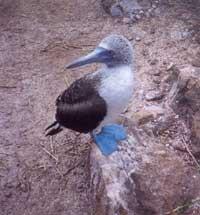Models in Galapagos Islands
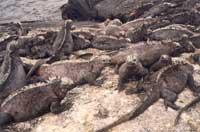
After having been wonderful islands, these ugarte were “exploited islands” until Charles Darwim Research Center Station opened in 1959, since after the proclamation of the islands by Ecuador of the National Reserve in 1935, only a study of the destruction suffered by Nature was carried out. Since then, UNESCO has also collaborated with this rescue action, classifying the treasure of world nature.

Paradise, which was seen by Charles Darwin and his ancestors and sailors, was to lose its wildlife. In them Charles Darwin built the theory of vital evolution. What was and will be a place of knowledge was to become a desert, destroyed by the blind and hard exploitation of the former and by the indifference of the neighbors... The famous book “The origin of Species” made it believe that the “wonderful islands” deserved more, the people of Ecuador and the world of knowledge soon realized.

I would like to do less and more than the description of the Galapagos Islands. A classification, in the first place, of three types of islands: the closed islands (which are rarely inspected by an expert, which do not have a population), the semi-closed islands (which a number of tourists can see during the day and touring certain routes) and the extensive islands (populated by plants and animals, beasts and trees more difficult and common).
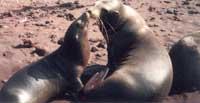
Shelters and nurseries have been organized for those who are about to get lost. Therefore, we will investigate these two directions: that of animals saved and easily accessible, and that of animals in danger of extinction in another article.
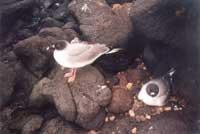
However, in our visit we have seen that the lack of sustainable population, hunters and noises slow down the bushes, that having a distance of respect (1 meter) were not birds or mammals that angered or fled. When we were too close the iguanas threw us constructing the qulula on the head and showing the teeth to which the seals barked us (see photo).
Saved Hunting
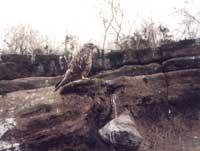
In Galapagos you can see species of animals that have been cared for and protected, in addition to reproducing nasally. This is what we have among the birds the oinazul ditch (blue-footed booby) the red fly bird (Pajaro brujo) the fregata bird, the desalinated cormorant (Phalacrocorax apterus), the American pelican and the sasipinguinos (Speniscus mendiculus), which inhabit the large groups on all the shores of the island (there are not many people). In other islands, however, no other appeared outside gulls, fregatas and albatross. There is no such imbalance between birds, since the Galapagos hawk is there to attribute to sick and weak (see photos).
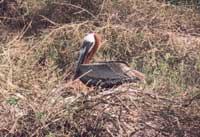
Of course, being these dry islands inland, at least in the meadows areas there has not been so much water and lagoon: we have not seen geese or wild animals, nor promised flamingos. We did not go through the mountains, but it seems that in the upper part of the island of San Cristobal agriculture is included. Therefore, I do not believe – even if they have not taught us – that there are many birds of the jungle, except for some papagens or flowers.
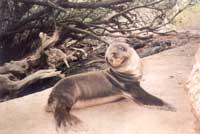
Therefore, when the water is on the shores of the sea, we also find mammals, which mainly take their food from the sea, such as the seal (see photo), smaller than the Mexican sea lion, and in addition to the unhunted, that we approach a meter away. These Galapagos sea lions or baskets are more elegant, more comfortable swimming in the sea, but when they land they are easier on land than seals. They land by chance, cannot fertilize or grow in the sea. Of course, they have chosen for the landing islands without living beings.
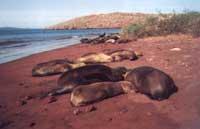
The importance of latency is manifested in the evolution of living beings in the Galapagos, so that on one island the marine iguana is large and yellow and on the other it is small and black. Fortunately there are about two or three islands, which alternatively, opening the Bisitalians, help follow the “wild” living beings, which despises them and facilitates reproduction.

